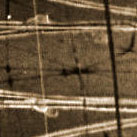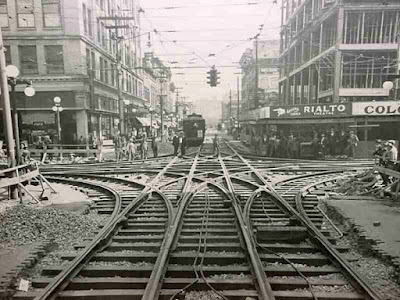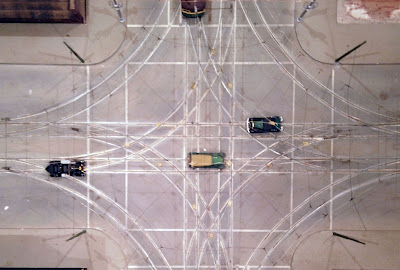A Great Photo of a Grand Union Intersection from Roanoke, Virginia taken in the 1930s.
Photographed in ideal conditions as well- nice new dark asphalt and the sun is just right to light up the rails.
This junction was at the intersection of Campbell Ave, and Jefferson Street in downtown Roanoke.
What is interesting to me is how tight the intersection is. The rails of the left turn routes intersect right on the rails of the through routes. I don't think a Grand Union Junction could be any tighter.
 The overhead wire geometry is next to impossible to make out. It's easier to see its shadows. Is this four contact wires converging on one frog!?!
The overhead wire geometry is next to impossible to make out. It's easier to see its shadows. Is this four contact wires converging on one frog!?! Construction Photo ca 1927.
Anyway- I thought I would share this interesting piece of construction. Yes sir! Thought I would share!
Dandy





And here I thought Roanoke was only known for that juggernaut of steam, the mighty Norfolk and Western! Well, it is, but you're right - that's a beautiful piece of trackwork!
ReplyDeleteIt is really interesting to see that the diverging rails both align with the through route rail for a three way frog, AND the 90 degree crossing also aligns with the curving rail. Someone had their drafting tools out to craft this geometry so precisely. It is a wonder the flanges didn't pick the rail points at the intersections.
ReplyDeleteI am really enjoying following construction of the layout.
Keith Hayes
Leadville in Sn3
I wish you a happy new year 2022. To me your blog is the best one about streetcar modeling, it is informative, concise and entertaining. And surprising. And you obviously have fun. And time. I always wonder what comes next... And both intersections are beautiful in their symmetry.
ReplyDelete